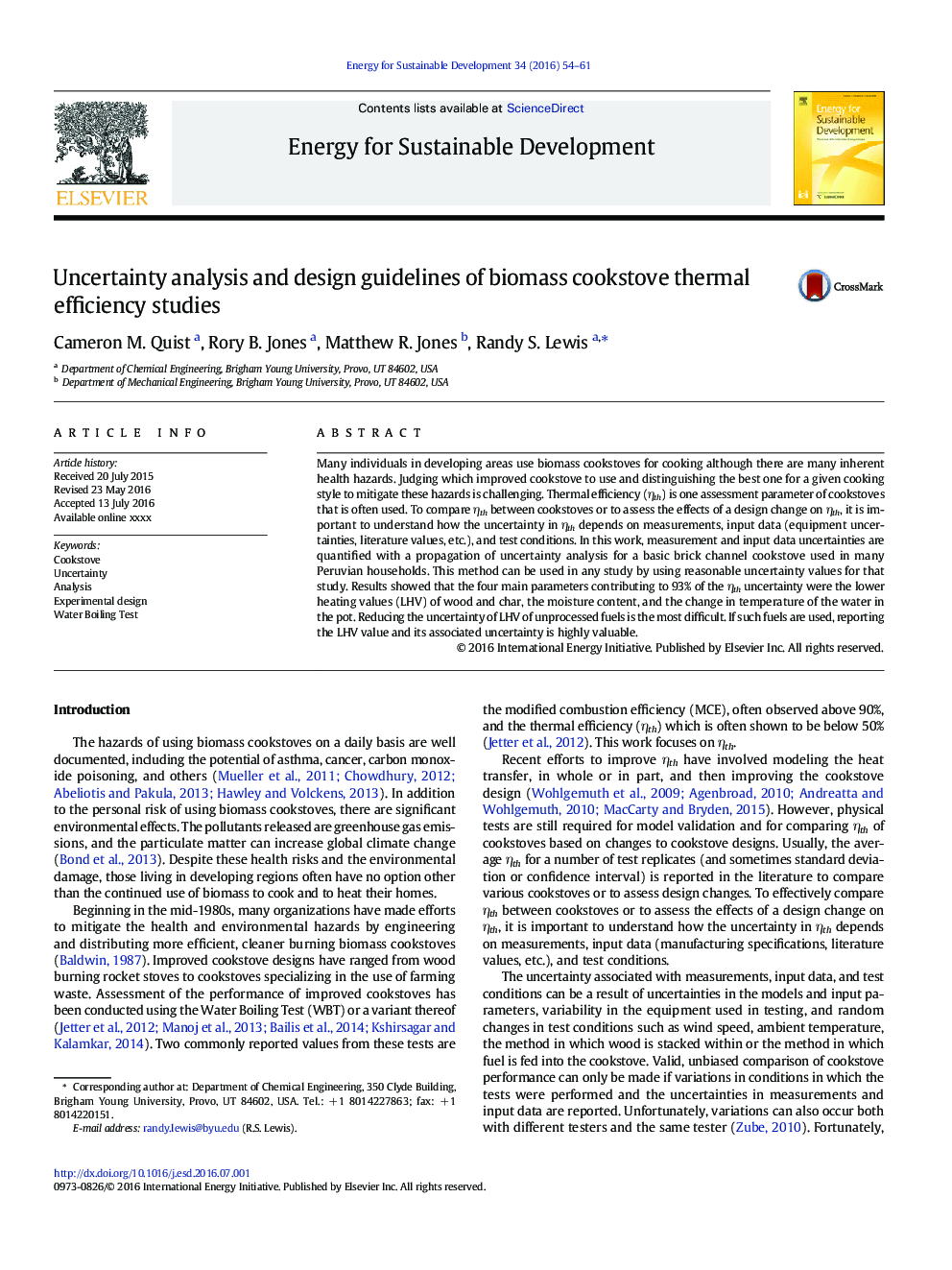| Article ID | Journal | Published Year | Pages | File Type |
|---|---|---|---|---|
| 7453733 | Energy for Sustainable Development | 2016 | 8 Pages |
Abstract
Many individuals in developing areas use biomass cookstoves for cooking although there are many inherent health hazards. Judging which improved cookstove to use and distinguishing the best one for a given cooking style to mitigate these hazards is challenging. Thermal efficiency (ηth) is one assessment parameter of cookstoves that is often used. To compare ηth between cookstoves or to assess the effects of a design change on ηth, it is important to understand how the uncertainty in ηth depends on measurements, input data (equipment uncertainties, literature values, etc.), and test conditions. In this work, measurement and input data uncertainties are quantified with a propagation of uncertainty analysis for a basic brick channel cookstove used in many Peruvian households. This method can be used in any study by using reasonable uncertainty values for that study. Results showed that the four main parameters contributing to 93% of the ηth uncertainty were the lower heating values (LHV) of wood and char, the moisture content, and the change in temperature of the water in the pot. Reducing the uncertainty of LHV of unprocessed fuels is the most difficult. If such fuels are used, reporting the LHV value and its associated uncertainty is highly valuable.
Related Topics
Physical Sciences and Engineering
Energy
Energy (General)
Authors
Cameron M. Quist, Rory B. Jones, Matthew R. Jones, Randy S. Lewis,
